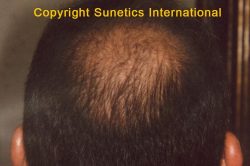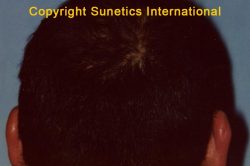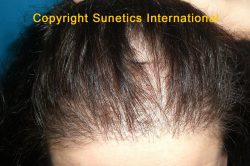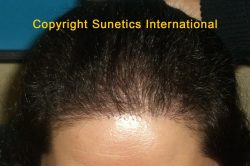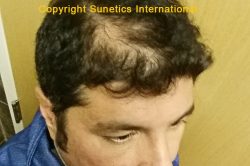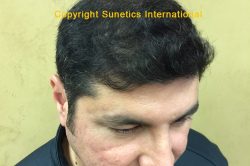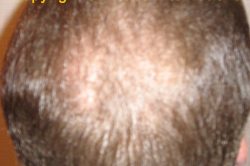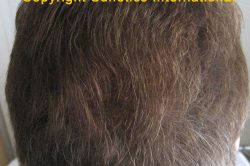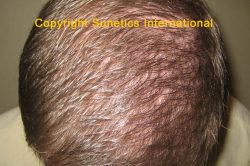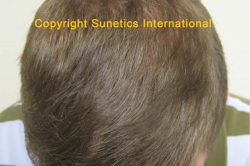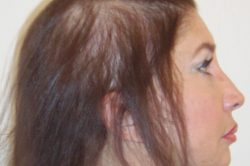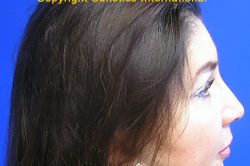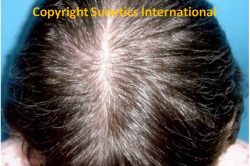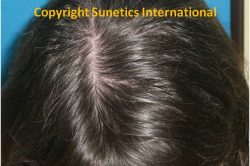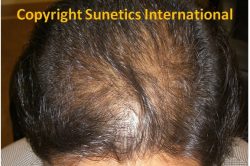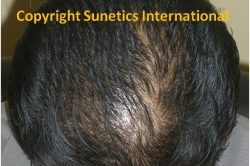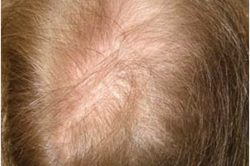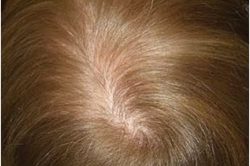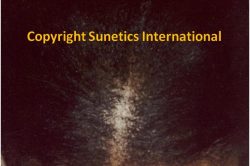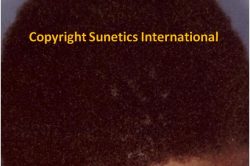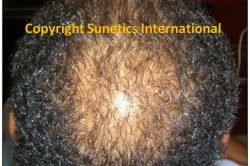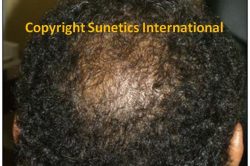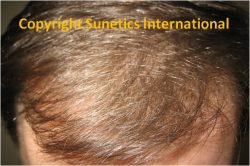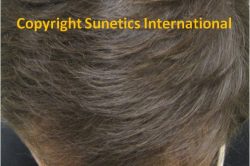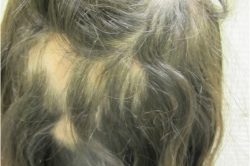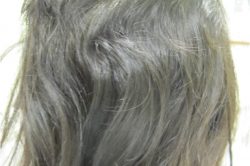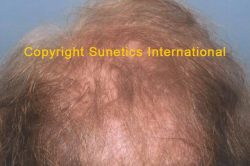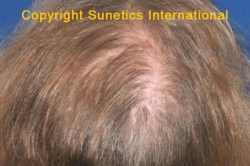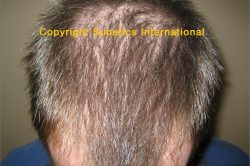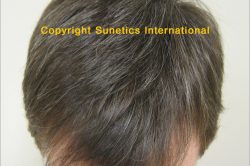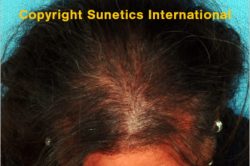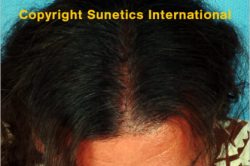An Effective Hair Loss Treatment: The Sunetics Hair Regrowth Laser
Serenity MedSpa is a trusted and experienced center in noninvasive, hair-regrowth treatments.
80 million Americans suffer from hair loss. 50% of men and 33% of women are affected. By the time you notice hair loss, as much as 50% of your hair is already gone! Hair loss is a progressive disease that may affect your self-confidence, self-esteem, job opportunities and personal relationships.
1 our 2 men and 1 out of 3 women suffer from hair loss.
What are the current hair-loss treatment options?
- Prescribed oral drugs: Men can experience serious sexual side effects from these drugs and they can be unsafe for women. They require daily use and a lifetime commitment.
- Topical and gels: These products can be messy and cumbersome. They also require daily use and a lifetime commitment.
- Transplant: This can be costly for patients and isn’t a good option for most women.
- PRP (platelet-rich plasma) Injections: This can be a good option for most patients, but some may be afraid of injections.
The Sunetics hair regrowth laser offers a great alternative solution to hair loss with NO PAIN, NO DRUGS, NO SURGERY and NO SIDE EFFECTS. Ninety-nine percent of patients see a decrease in excess shedding and a stabilization in their hair loss, while 90% see measurable regrowth.
Stop excessive loss See regrowth
How does the hair laser work?
The Sunetics hair laser uses low-level laser therapy (LLLT) to stimulate the hair follicles, enabling the hair follicles to heal and regrow into thicker, normal-sized hairs. By using 100% laser energy, the treatment is more effective than LEDs.
Different light wavelengths have different effects on human tissue and can reach different depths. Hair follicles most efficiently absorb coherent laser light at a wavelength of 650 nanometers (nm), which is in the red color spectrum. Red laser light has been clinically proven to have a healing effect on human tissue and hair follicles. The Sunetics proprietary laser diodes uses red laser light at 650 nm, the ideal wavelength for clinical strength hair rejuvenation
You can find more information about the technology behind the Sunetics Hair Laser at the end of the webpage.
How does the hair laser affect the hair growth cycle to regrow hair?
Hair grows in a continuous cycle made up of four phases: growth (anagen), transition (catagen), resting (telogen), and shedding (exogen).
At any given time, 10-20% of your hair is in the telogen (or resting) phase, waiting to be shed and replaced by an active anagen hair (similar to the way a baby tooth is pushed out by a permanent tooth), while up to 90% of your hair is growing. The growth phase typically lasts 3-6 years in a healthy hair, but if the growth phase is shortened, hair will enter the other phases too quickly and start to thin.
How does hair loss occur?
The average person loses about 100 hairs per day from the resting phase. Excessive hair loss occurs when more than 100 hairs per day are lost. For male and female pattern hair loss, this increase in hair loss is typically caused by the hormone dihydrotestosterone (DHT). As DHT builds up, the hair follicles weaken and it’s more difficult for the body to flush out the DHT quickly.
Eventually, DHT disrupts the normal hair cycle, shortening the growth phase. This causes the hair follicles to miniaturize and produce shorter, weaker hairs, characteristic of thinning hair. In the continued presence of DHT, hair follicles may keep shrinking until they no longer produce hair leading to permanent baldness.
How does the Sunetics hair-growth laser help regrow hair?
The science behind the Sunetics laser is simple: laser light heals the hair follicle, making the effects longer lasting than other treatments. By increasing cellular activity and removing harmful DHT, it help the follicles heal and regrow normal, healthy hairs.
How does the Sunetics laser heal the hair follicles?
The hair-growth laser:
- Increases production of ATP to energize and repair the weakened follicle
- Increases blood micro-circulation to the follicle
- Increases nutrient acquisition by the follicle
- Increases oxygen uptake and calcium ion mobilization
- Increases rate of removal of harmful DHT
- Decreases follicular inflammation
What kind of results can I expect?
Stage 1 (months 1-2): You’ll see a decrease in excessive hair loss. The laser will stabilize the hair and reduce shedding and thinning. This happens in 99% of patients.
Stage 2 (months 2-4): As your hair follicles being to heal, you’ll see your existing hair get thicker, fuller, shinier and healthier.
Stage 3 (months 4-7): Your miniaturized hairs will begin to grow into thick, normal sized hairs.
This patient when through all three stages in 8 months.
This patient went through all three stages in 6 months.
Patients will vary in response time:
EARLY responders: These patients can successfully move through all three stages and see dramatic results as early as two months into the laser therapy protocol.
AVERAGE responders: These patients see hair growth around the six-month mark. This is where the majority of patients see stage-3 results.
LATE responders: These patients may not experience stage-3 results until as late as 10-11 months after starting treatments.
Before-After Gallery
How is the Sunetics hair laser treatment performed?
With the Sunetics laser treatments, there are no needles, no incisions, no need for anesthesia and no recovery time. This procedure is easy and convenient and only lasts 20-30 minutes. During the treatments, you can read, work on your laptop, listen to music or just relax.
How is the hair laser treatment performed?
There’s absolutely no downtime after the treatment. You may immediately return to your normal routine.
Are there any side effects or pain with the Sunetics hair laser treatment?
The Sunetics hair laser is very safe. It’s a non-invasive, low-level laser. The laser is cool to the touch, and since there is no heat involved during the treatment, the laser is even safer than sunlight as you cannot get burned. There are no known side effects. There is also zero pain associated with the treatment.
Is the Sunetics hair laser FDA cleared?
Yes. The Sunetics hair laser received FDA 510(k) clearance in 2014 for both safety and efficacy for the treatment of androgenetic alopecia (hair loss) and to promote hair growth in both men and women. It is the first clinical laser to be FDA cleared, meaning it can be legally marketed to the public or medical professionals.
The Sunetics hair laser is rated as a NSR (non-significant risk) device.
How many treatments do I need to see results with the hair laser?
Here is the recommended treatment protocol:
- First three months: Twice a week. Minimum once a week.
- Next three months: Once a week or twice a week to see faster results.
- Maintenance: After the first six months, you can do the treatment once a month. If additional treatments are needed, you can come in twice a month for up to six additional months.
How long is each treatment?
The laser treatment lasts 20 minutes. However, we recommend 30 minutes to get additional benefit. The laser treatments should be scheduled with at least one day in between.
Will the Sunetics hair laser work alone to help with hair loss?
Most patients will see results from the hair laser treatment without any additional treatments. The Sunetics laser is a great option for people who aren’t candidates for hair transplants or those not interested in drug treatments or topical solutions.
Can the hair laser be combined with other hair-loss treatments?
Yes. The Sunetics Hair Laser can be combined with other hair loss treatments such as Propecia, Minoxidil or supplements. The Sunetics Laser can also be used with PRP hair injections with or without ACell to boost results. Because the Sunetics Laser heals the hair follicles, it won’t negatively impact other treatments.
Who is the ideal candidate for the hair laser?
The ideal candidate for the Sunetics hair laser is a man or woman in the early stages of hair loss. Those who are bald are not candidates.
Who are other good candidates for the hair laser?
- Men or women who have or expect to have hereditary male or female pattern loss
- Women with diffuse hair loss
- Post-menopausal women experiencing hair loss
- Men unwilling to take Propecia
- Those who are not good candidates or unwilling to have hair transplant surgery
- Men or women currently using prescription or non-prescription hair loss treatments
- Those who have had or plan to have hair transplant surgery
- Those experiencing medication medication-associated hair loss from chemotherapy or other medications
- Those who have illnesses that have caused them to lose hair
- Women who are experiencing or expect to experience post-partum hair loss
- Those who are fearful or unwilling to use PRP because of the needles
Can hair laser therapy be used after hair transplant?
Yes. Using the hair laser after hair transplant has many proven benefits:
- The scabbing time and would healing is greatly accelerated.
- It’s been reported that nearly 75% of the transplanted follicles that would normally fall out from post transplant shock remain active, for a much better result.
- Instead of waiting four months to see new hair growth from the transplanted follicles, patients see new growth in just two months.
- The other non-transplanted hair gets thicker and healthier.
More information about the Sunetics Hair Laser
Is the Sunetics device a laser or LED?
There is a huge difference between lasers and LEDs. The Sunetics clinical laser uses 100% laser energy with an array of red laser light diodes at a 650nm wavelength.
There are many sources of light, but only lasers produce coherent light. Coherent light waves are travel in synchronicity, meaning they are highly focused and very little energy is lost. Laser light needs to penetrate the scalp deep enough to reach the base of a hair follicle. No other light source (such as LEDs) can achieve this. By directly treating the base of the hair follicle, Sunetic’s cold laser technology ensures that the hair follicle is stimulated, producing cellular energy that allows the follicle to heal.
LED: LED stands for Light Emitting Diode and is typically what you see inside of flashlights and Christmas tree lights and can come in many colors. LEDs are divergent and incoherent. Divergent means that the light spreads out all around the diode and loses power the farther away it gets from the light source. Incoherent means that the waves of light move at random, causing the light to lose energy as it travels. LEDs are typically used as light sources and are sometimes used in medical devices to treat surface skin conditions. Because the energy is diffused, LED light does not penetrate deep into the skin making it most effective for treating surface skin conditions, such as acne or wrinkles.
LASER: LASER stands for light amplification by stimulation of emitted radiation. Lasers are monochromatic and coherent. Monochromatic means that all of the light produced by the laser diode is the same light wavelength. This is important for medical procedures that only see effects from a specific wavelength. Coherent means that all of the waves of light are moving together. Being coherent allows the light to be much more concentrated and retain all of its energy. This concentrated light is able to penetrate deep into the skin to reach the hair follicle.
What are the differences between a cold laser and a hot laser?
The Sunetics hair laser uses cold versus a typical hot laser. Cold and hot lasers are very different, in both their features and uses. When most people talk about lasers, they think of hot lasers. Hot lasers are ablative and can burn the skin (eg: laser hair removal, IPL, and surgical lasers)
Cold lasers (or low-level lasers) produce no heat. This is because they only output a few mW (milliwatts) of energy rather than hundreds of watts like ablative lasers. Cold lasers that use a wavelength of 650nm have been clinically proven to have a healing effect on the body, causing an increase in cell activity. Cold lasers produce no heat or pain, and have no side effects.
Sunetics proprietary laser dispersion technology
The Sunetics clinical laser uses proprietary laser dispersion technology to allow full coverage of the scalp. All other laser devices use standard laser diodes that have a “rifle” effect (i.e.the laser diodes emit light in a small collimated beam, making only small dime-sized spots on the scalp). Many laser devices try to overcome this effect by adding LEDs (giving the appearance of full coverage) or by increasing the number of diodes (over-saturating the scalp with energy).
The Sunetics clinical laser uses proprietary dispersion technology which has a “shotgun” effect. The Sunetics laser diodes uses an opened beam to maximize coverage, while maintaining high energy levels to penetrate the skin and reach the hair follicle.
Sunetics laser dispersion spreads pure coherent laser energy over a large surface area for 100% full-scalp coverage.
To find out if you’re a good candidate for hair regrowth laser therapy, schedule a consultation with Dr. Lisa Kang.
For San Francisco, North Bay and East Bay clients, call our San Francisco office at (415) 781-9200 or email Info@SerenityMedSpa.com.
For Peninsula and South Bay clients, call our Burlingame office at (650) 887-7777 or email Burlingame@SerenityMedSpa.com.

